- In the last five years (2011-2016) more than 54,000 hectares of forests were converted to grasslands in the core area of the Biosphere Reserve of Southeast Nicaragua, which represents 19.4 percent of its size.
- According to data published by the Nicaraguan Export Processing Centre, last January, beef was Nicaragua’s main export product with more than $43.9 million in sales.
- Livestock production in Nicaragua typically consists of allocating one block (0.7 hectares) for each head of cattle, which explains, in part, why the development of this industry threatens sites such as the reserve.
- The sale of land for agricultural production in southeastern Nicaragua has not only displaced human populations into the depths of the forest, it also makes them migrate to the cities of Nueva Guinea and Bluefields, or Costa Rica, in search of better incomes.
SOUTHEAST BIOSPHERE RESERVE, Nicaragua – The Biosphere Reserve of Southeast Nicaragua is bigger than countries like Qatar or Jamaica and shelters 526 species of birds—more species than can be found in Europe. Although it is said to be the kingdom of the jaguar (Panthera onca), cows appear to be more common nowadays.
This contradiction is the result of almost 50 years of human depredation in the lush forest, which despite the agricultural pressure to which it is subjected, has the equivalent of 10 percent of the planet’s species, according to data from the Ministry of the Environment and Natural Resources (MARENA).
Mongabay-Latam visited the area and it was possible to observe the human-forest conflict: the forest that used to reach the edge of the road that links Southeastern Nicaragua to the Pacific is nowhere to be seen. In the less populated areas only cattle farms exist.

Although the area now has better infrastructure, traveling by bus is still a challenge. To get to Nueva Guinea, a municipality located inside the reserve, you have to leave at midnight. Despite the excellent condition of the road, the trip can take between six to eight hours. The bus will drop you off 200 kilometers from Managua, and from there, you have to take another bus that will get you to your destination.
The reserve extends over 13,923 square kilometers, of which half, 52 percent, is considered a buffer zone—controlled human activities with low impact development are allowed—the next 28 percent is the so-called transition zone, with more stringent regulations; and the remaining 20 percent is the core zone, where land use change is not allowed and is the least affected by the local livestock development.

Seven protected areas make up the reserve
The seven protected areas that make up the reserve are the Fortress of the Immaculate Conception Historical Monument, the Solentiname Islands National Monument, Río San Juan of Nicaragua and Los Guatuzos Wildlife Refuges, Indio Maíz Biological Reserve and the Cerro Silva and Punta Gorda Natural Reserve.
Inside these protected areas one can find impenetrable rainforests, coastal areas of the Caribbean Sea, the country’s most voluminous river (San Juan of Nicaragua), and islands south of Nicaragua’s Great Lake, or Cocibolca.
Today, high biodiversity is mainly seen in the core zones of each protected area that make up the great reserve, not because they are protected, but because they are difficult to access. The easier way to access most of them is by taking a small plane and then paying for a private boat. The areas of easier access require your own transportation; a motorcycle is ideal because crossing the rivers and rocky roads is more complicated.

Life is different within the core areas of the Biosphere Reserve of Southeast Nicaragua; plants are scattered and human presence is scarce. Time seems to freeze between the stillness of the leaves and the infinite chirping of cicadas, there are more orchids in the trees that one can count, and less visible fauna than one expects.
In the reserve, in addition to the jaguar, you can also find species such as the wild boar (Tayassu pecari), the ocelot (Leopardus pardalis), the crocodile (Crocodylus Acutus), the three-toed sloth (Barypus variegatus), the anteater (Myrmecophaga tridactyla), the green macaw (Ara ambiguus), the red macaw (Ara macao), and the manatee (Trichechus manatus), among others.
In the last two decades, some populations of threatened species have been further reduced. There are large mammals that today can only be observed with trap cameras, a mechanism that was used by biologist Sandra H. Potosme between 2010 and 2014 when she investigated the presence of jaguars in the Caribbean Biological Corridor. On the contrary, the number of cattle exceeds 1.1 million in the municipality of Nueva Guinea, according to data of the most recent National Agricultural Census (2011).
Nueva Guinea, located in the South Caribbean Coast Autonomous Region (RACS), 282 kilometers from Managua, is located in the buffer zone of the Biosphere Reserve of Southeast of Nicaragua; due to its location, the municipality is used by livestock producers to get to the core zone.
In 1992, Nicaragua’s former president, Violeta Barrios de Chamorro, declared southeastern Nicaragua “a territory of sustainable development” in an attempt to curb the expansion of extensive cattle ranching and promote forest management; however, it did not work. In 2003, the government of Enrique Bolaños managed to declare the zone a Biosphere Reserve, after MARENA designed a strategy of sustainable management.
The economic weight of livestock
Statistics from the Export Processing Centre (Cetrex) confirm that livestock production in the country, far from being controlled, enjoys great dynamism: last January, beef was Nicaragua’s main export product with more than $43.9 million in sales.
In fact, five of the top 15 products exported by Nicaragua in January 2017 fell inside the livestock category, while none of the forest production category appears in the top 30.
The remaining four livestock products are cheese ($10.2 million), milk ($4.6 million), edible offal and viscera of cattle ($2.3 million), and live cattle ($2.1 million).
Adding up all the timber products sold last January, from lumber to furniture, the industry sold $1.4 million, demonstrating how livestock production has developed more than the forestry industry in Nicaragua, despite legal attempts to preserve the country’s forestry vocation, including that of the Southeast.
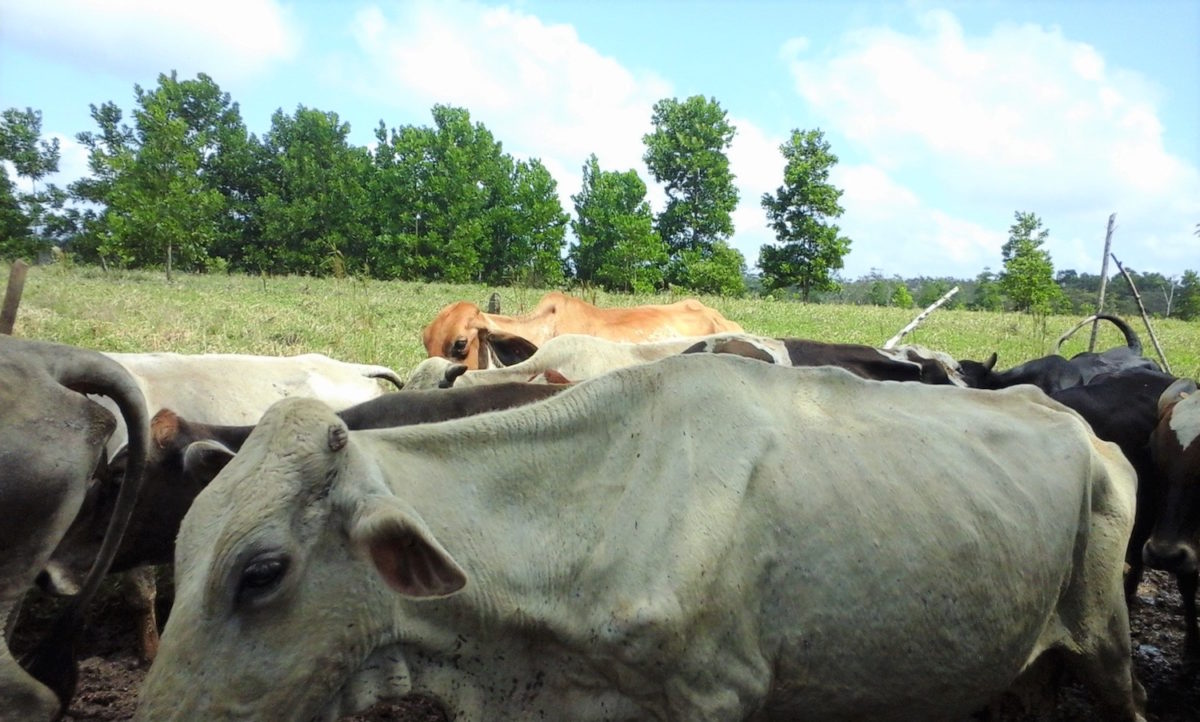
Official statistics are not a coincidence. In the ranking of the 20 Nicaraguan products with the largest sales abroad throughout 2016, beef displaced raw gold in the first position, with sales of $430 million; cheese came fourth with $116 million in exports; milk in position 11 with $51 million; live cattle in 13 with $28 million; and edible offal and viscera of cattle in the 16th place with $24 million.
Although these data belonged to all the Nicaraguan livestock production, Jurgen Guevara Alonso, the head of Extractive Industries for the environmental NGO Humboldt Center, recalled that three-quarters of the Nicaraguan territory is forested, although the soil is used for other activities, such as agriculture, or livestock in the case of Nueva Guinea.
Nueva Guinea is not a conventional cattle ranch municipality. According to the latest National Agricultural Census (IV Cenagro 2011), this is the jurisdiction with the most cattle farms in Nicaragua, all developed in the buffer zone of the Biosphere Reserve of Southeast Nicaragua.

According to the census, of a total of 136,687 records of livestock activity in Nicaragua, 19,193 are established in Nueva Guinea, which represents 14 percent.
This positions Nueva Guinea as the Nicaraguan municipality with the greatest livestock activity—despite being inside the reserve—surpassing even jurisdictions that are known historically for cattle ranching activities, such as Boaco and Chontales, in the central part of the country.
Distinguishing areas of cattle ranching on a satellite map is challenging because they are combined with forested areas in a sort of mosaic around the core areas.
The threat of ‘chontalinization’
What happened in Nueva Guinea and is now affecting the Biosphere Reserve of Southeast Nicaragua is locally known as ‘chontalinization:’ the transformation of forests into land for extensive cattle ranching. This happened at the end of the last century in the province of Chontales, in the center of the country, where pastures replaced forests.
Extensive livestock farming is the most widely used production technique in Nicaragua, and consists of allocating one block (0.7 hectares) for each head of cattle, which explains, in part, why the development of this industry threatens sites such as the southeast reserve, where there is constant rain and the terrain is flat and suitable for the fast growth of pasture.
Attracted by these advantages, farmer José Santos Casco arrived in Nueva Guinea more than three decades ago. With around 1,200 head of cattle on his farms, today he is one of the biggest cattle producers in the southeast.
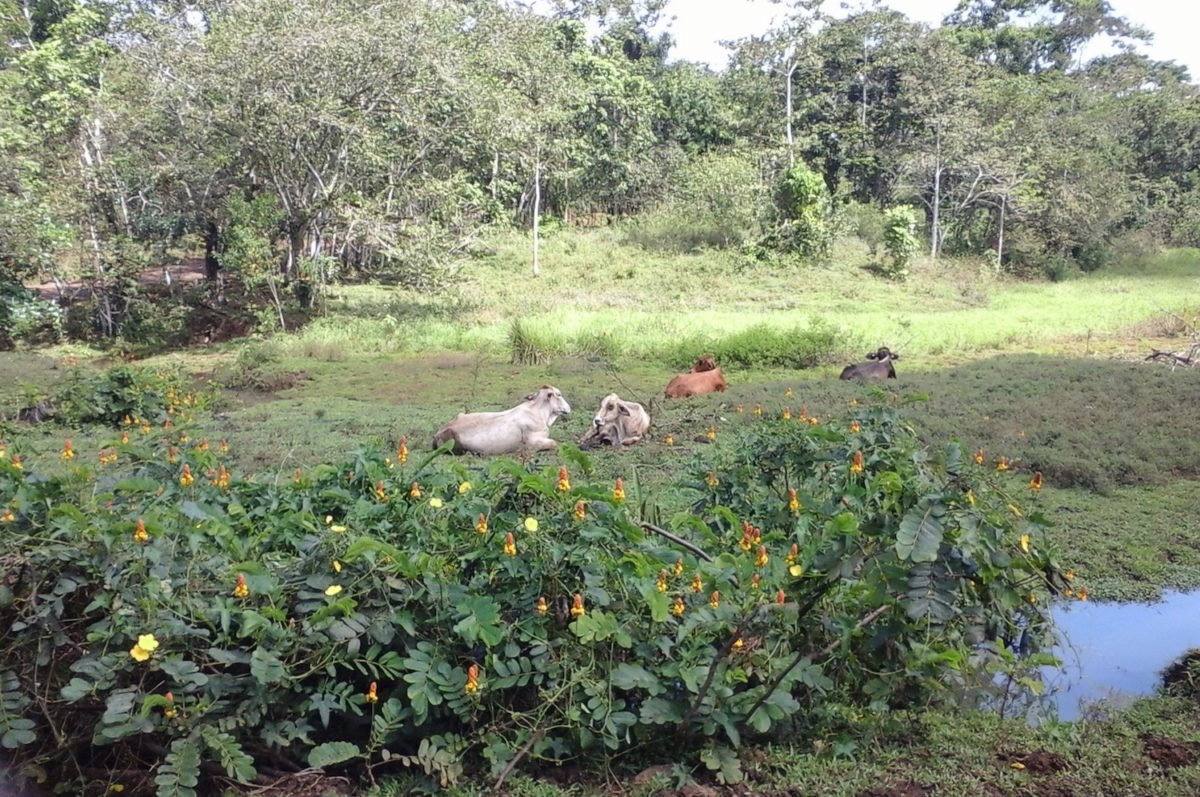
“I was Chinandegano (from the northwest), now I am from Nueva Guinea, we came here because of the same problem: in the northern area we have little rain, and since we like cattle ranching, we came here because it rains all year round,” said Casco.
Like most of the wealthiest ranchers in the area, Casco wears a plaid shirt, jeans, boots, and a hat. His simplicity contrasts with the SUV parked near his spacious house. He has no problem taking responsibility for forest degradation, but also insists that he is now aware of forest conservation, something he did not know when he first arrived in Nueva Guinea.
Not all ranchers are like Casco. Most people avoid talking to strangers, even if they were sent by somebody the rancher knew. After apologizing, they continue working on their farms, side by side with their employees, sinking their rubber boots into the mud while they inspect the cattle, give orders to take the cows that have already been milked to the paddocks, remind the landlord that fences need repair, and ask for a horse so that they can supervise the lands that are destined for cattle ranching.
‘Chontalinization’ began in southeastern Nicaragua in the late 1960s as a result of a volcanic eruption in the northwest, across the country.
“With the eruption of Cerro Negro in 1968, the government decided to transport some of the victims to those remote places (southeastern Nicaragua) as a solution to the destruction of their crops. But these people knew nothing of forest management so they began cutting down forests,” Jaime Incer Barquero, scientist and the presidential advisor for environmental issues, told Mongabay-Latam.
Deforestation and desertification in southeastern Nicaragua has not stopped since then, not with the establishment of the seven protected areas that make up the Biosphere Reserve nor with the investment of more than $80,000 in park ranger monitoring posts between 1999 and 2003, as part of UNESCO’s Man and the Biosphere Program (MAB).
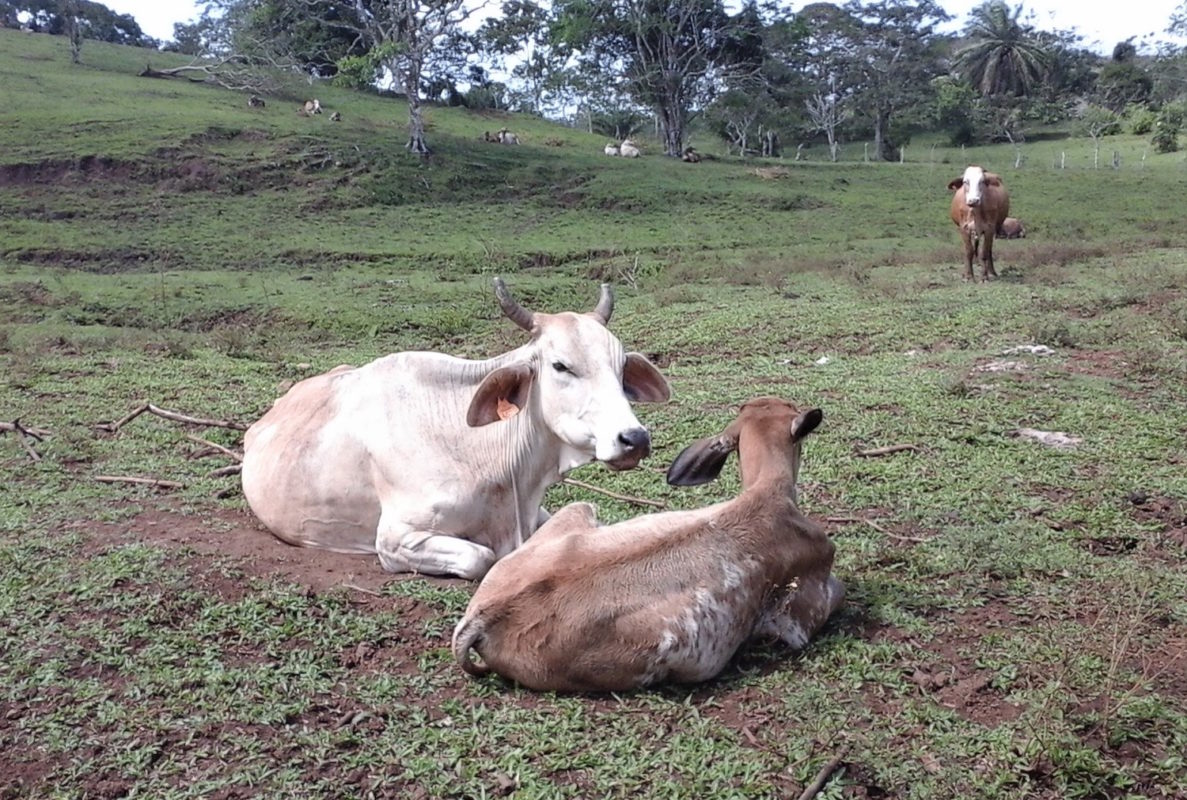
This is confirmed by the latest report issued by the Humboldt Center (2016), specifying that in the last five years (2011-2016) more than 54,000 hectares of forests were converted into grasslands in the core area of the Biosphere Reserve of Southeast Nicaragua: 19.4 percent of its size.
However, verifying the transformation of forests into grasslands within the core zone is complicated, as these patches are dispersed and often one can find peasants with a maximum of five livestock.
Getting to the core area of the reserve through Nueva Guinea is not easy, the poor state of the roads or lack thereof, as well as the lack of transportation, makes it difficult to enter the area. Also, some farmers present a hostile attitude because they see the presence of people from outside the area as a threat.
That is why an evangelical pastor of Punta Gorda, in the northern part of the biosphere reserve, refuses to give his name but confirms that “there is cattle (in the core area), not much, but there is. It’s hard to find the owners, and if you see them they just do not want to talk to you. They do not say anything because they know they have their business inside the core area.”
Researcher Amaru Ruiz, who studies the dynamics of land concentration for the environmental NGO Fundación del Río and the agency for inclusive development Nitlapan, confirmed that in the core area there are families who own two to five head of cattle, although their activity is mainly agricultural.
It is possible that the authorities have the exact data, but officials give different excuses for not revealing them. In Nueva Guinea, the local government also opted to close the Office of Public Information and send the press chief to attend the Municipal Library, where it has discretionary hours.
But this is not an isolated case, the government of Daniel Ortega is characterized by providing public information only through official media, or by the daily speeches of the vice president Rosario Murillo, with all the limitations that this entails.
The advance of cattle ranching into the forest
According to Ruiz, ‘chontalinization’ advances due to “a land purchase issue that has generated population displacement, which in turn increases the invasion-deforestation processes inside the reserve.”
According to cattle producer Alfredo Hidalgo, the acquisition and sale of land happens in different ways inside the reserve. The most common one is when large cattle farmers deliver some of their cattle to small producers established in plots deeper inside the reserve—they sometimes also force animals inside their plots—and force them to sell their land.
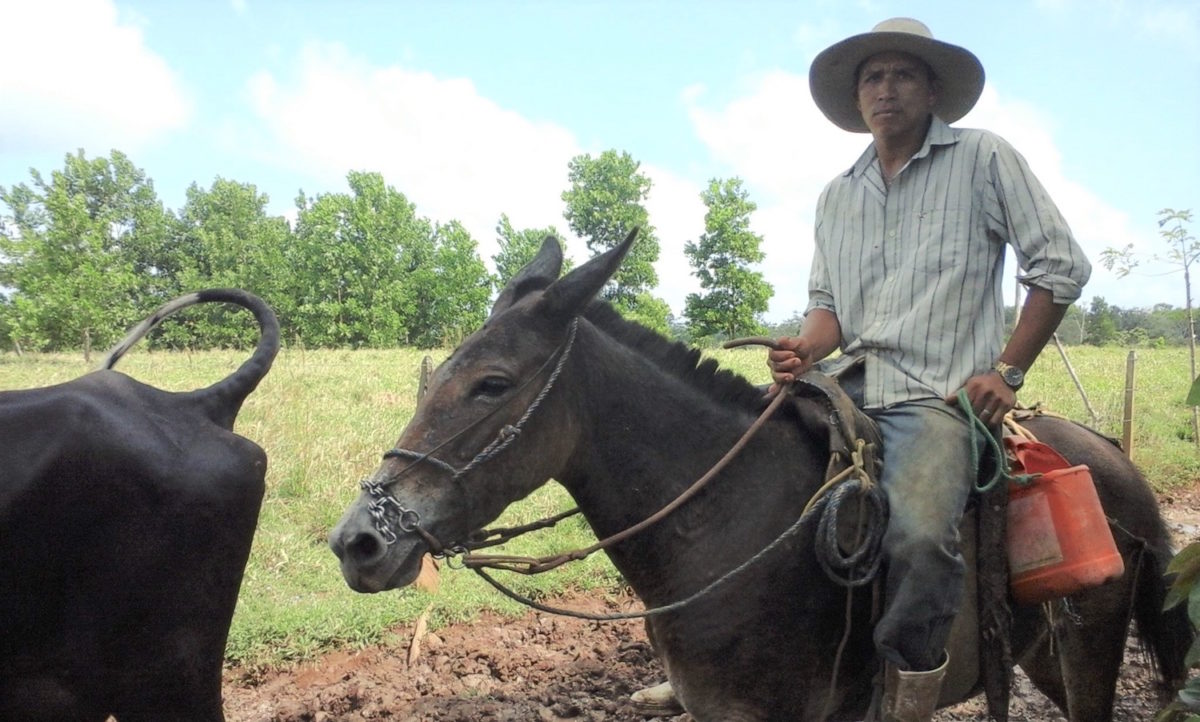
The farmer states that there are people who steal livestock and then register them under their name, which means they need more land for their stolen cows.
There are also properties that lose value for agricultural companies and are taken advantage of by farmers. Also there are ones offered by the ‘tomatierras’ who take the government’s word, which in different ways promote cattle raising and farm titling in the area, as happened in the municipality of El Almendro in the last decade, which gave rise to villages such as La Filadelfia in 2006, in the buffer zone of the Biosphere Reserve of Southeast Nicaragua.
“The government continues to encourage and resolve social problems by expelling peasants and forcing them to move inside forest reserves, even at the expense of affecting indigenous communities,” added Incer Barquero, who said that he does not worry about a possible dismissal as a presidential adviser for criticizing the Executive.
Likewise, Ruiz believes that the government has direct responsibility for what is happening.
“The public policies favoring the raising, fattening and selling of livestock promoted by the government, coupled with the extensive way in which livestock is traditionally established, have created the necessary conditions for the increase of new areas dedicated to livestock inside the buffer zones,” said Ruiz.
For Hidalgo, owner of about 30 head of cattle, the purchase and sale of plots in the southeast reserve “is widespread and because of that the agricultural frontier is advancing.”
This old farmer, with a thick mustache, string bracelets, a white shirt with long sleeves and bare chest, assured that the main reason for the trade of land in the reserve is the economic crisis that the population faces, but is not reflected in a macroeconomic point of view, which places Nicaragua as the country with the highest economic growth in Central America in recent years, averaging 4.7 percent, compared to 3.7 percent in the rest of the region, according to the Central Bank of Nicaragua (BCN).
The impact of livestock production
Hidalgo confirms that there are thousands of livestock farmers who have a maximum of five head of cattle, some of which buy land within the southeast reserve because it is cheaper, about $2,000 per block, compared to $4,000 near the roads. Production costs have tripled because of inflation —at least 3 percent annually— while meat, milk or live cattle prices have declined by about 15 percent.
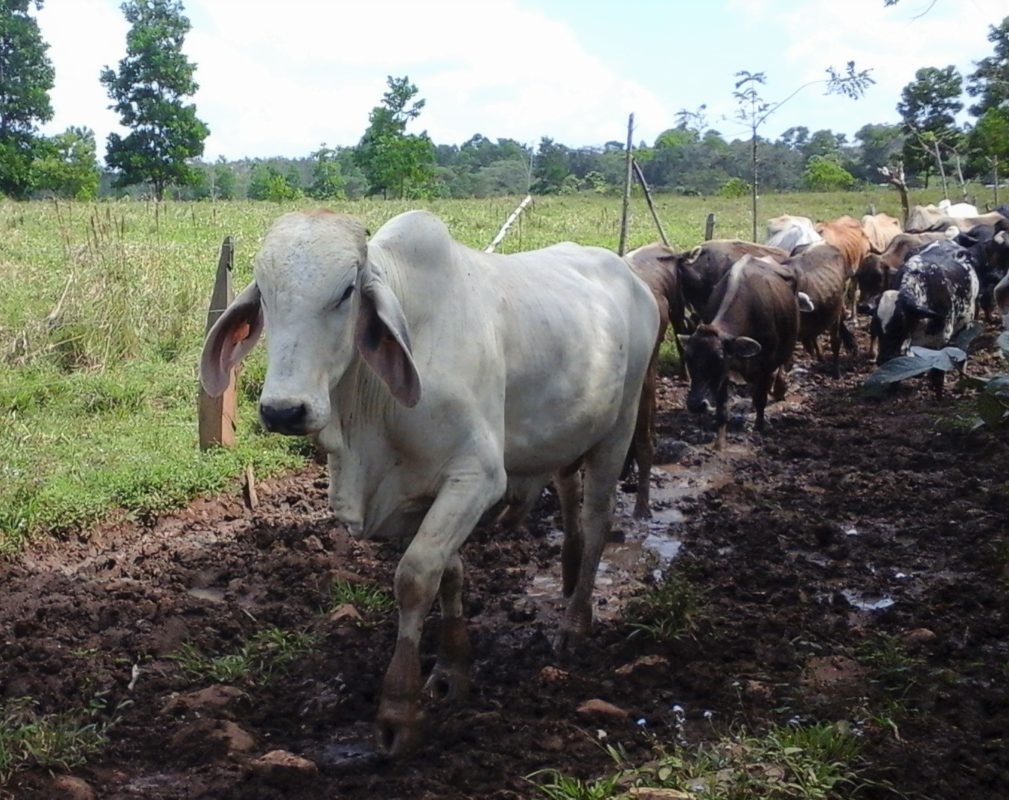
The sale of land for agricultural production in southeastern Nicaragua has not only displaced the populations of the reserve into the depths of the forest, it also makes them migrate to the cities of Nueva Guinea and Bluefields, or Costa Rica, in search of better incomes, according to the statements of Hidalgo and the pastor of Punta Gorda.
Incer Barquero identified other impacts as striking as the displacement of indigenous populations, such as the change of forest composition, loss of biodiversity, the change from a tropical humid climate to a dry one, increased vulnerability to disasters and the effects of climate change, reduced rainfall, more frequent flooding, sedimentation of rivers, destruction of aquatic fauna, and disruption of the Mesoamerican Biological Corridor, stretching from Mexico to Costa Rica.
Experts agree that livestock production has the capacity to completely deforest the biosphere reserve because it requires the minimum presence of trees, which are replaced by grass. Pastures, apart from not giving greater value to biodiversity, grow for a short period because cattle compress the soil —an effect that, combined with the rain and the lack of flora, eliminates the nutrients of the soil.
Gerd Schnepel, an adviser of the agro-ecological organization Sano y Salvo, said that although the livestock industry contributes millions of dollars to Nicaragua (10 percent of the gross domestic product, according to official data), its producers do not pay the actual cost of their business.
If they “had to pay the expenses of their activity, it would not be sustainable at all, because the society is the one that pays the consequences with scarcity of water, disease, hunger, thirst, dry rivers. Farmers do not pay for the consequences of their activity, they only think about their profit,” explained Schnepel.
The necessary change
Casco insists that while most livestock producers ignore the new techniques of livestock activities, there are some who have begun putting them into practice. New techniques include forestry which mixes the cultivation of forests with livestock.
“We are learning and we are trying to improve,” he insisted.
However, the Humboldt Center considers that the demand should be higher, and advocates for intensive livestock, which consists of raising more cattle in less area, in combination with systems such as forestry, explained Guevara Alonso.
Schnepel proposes a technique of organic agriculture that consists of “imitating nature,” so that, instead of cutting trees, the owners of farms plant species such as cacao, vanilla or vines, as well as tubers or musaceae. As for livestock, he recommends that it should be limited to guaranteeing family consumption.
“No one is convinced here because the cattle are not used to it, they are not fattened and they are stressed,” said Hidalgo referring to the fact that cattle are not adapted to graze in confined spaces.
Schnepel stated that more than cattle itself, the owners are the ones who do not get used to practicing different ways of cattle ranching; this is the case of Sano and Salvo, that started the project in Nueva Guinea five years ago with about 300 producers, and now there are only 100. The majority were not willing to wait between eight and 20 years to see gains.
“First we have to develop a new attitude, organic farming is not a technical method, but a way of life,” explained Schnepel.
But the way of life will not change if the government continues stimulating livestock activity and showing an inability to control the loss of forests, insisted Incer Barquero.
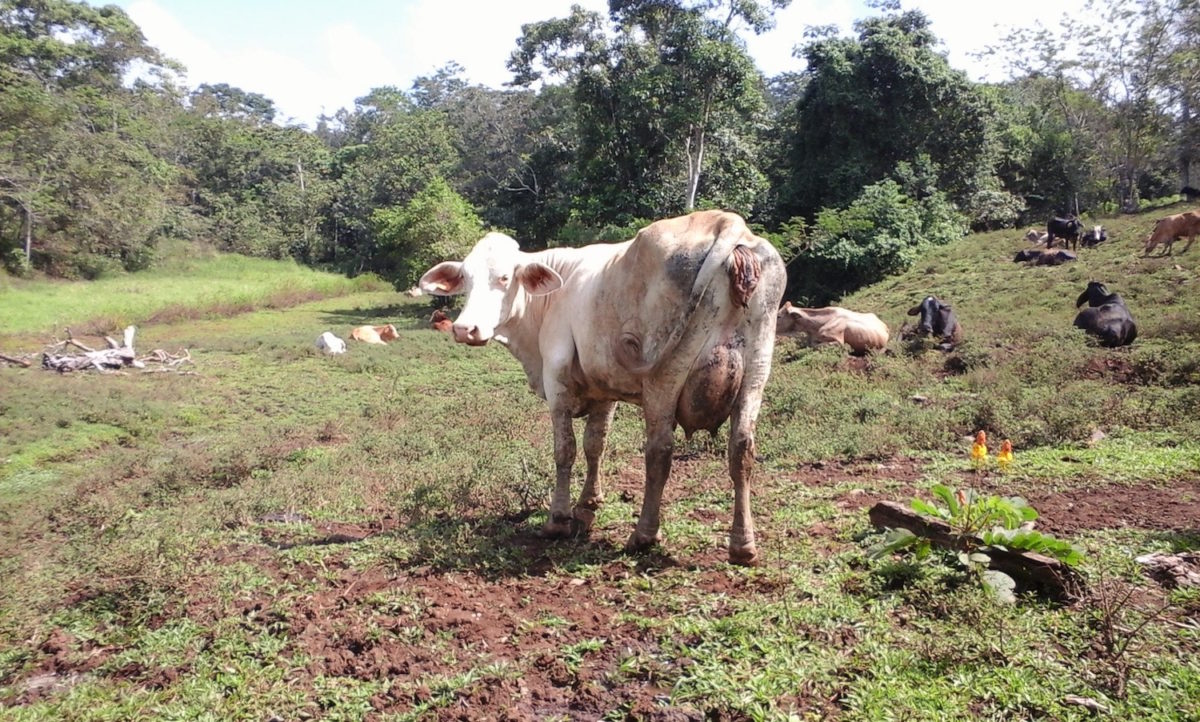
Last January the government of Nicaragua and the European Union announced an agricultural development project that aims to provide technology and training to 9,000 families in the southeast to develop sustainable livestock production over the next four years at a cost of $21.7 million.
The experts cross their fingers for the project to deliver the expected results, as they remember that it is not the first of its kind announced in Nicaragua.
Incer Barquero, who for two decades predicted ‘chontalinization’ and accelerated degradation of forest cover in his country, insisted that, as the forest decreases in the Biosphere Reserve of Southeast Nicaragua, all the wealth will be lost in about 20 years, “being very optimistic.”
Getting out of a biosphere reserve always produces restlessness, not so much because you leave nature, but because, as you stop seeing the enormous laurels, palm trees and almond trees rising above humus, you begin to notice the pastures and monocultures of the east of Nicaragua as an omen of what could happen.
Banner image by Wilder Pérez R. for Mongabay
This story was reported by Mongabay’s Latin America (Latam) team and was first published in Spanish on our Latam site on March 8, 2017.













